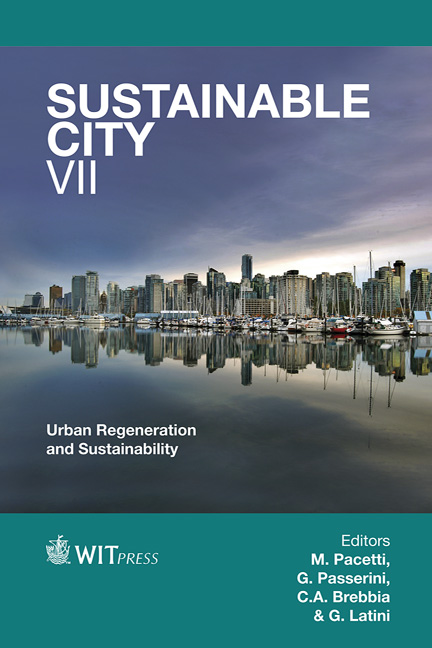Integrative Cities: When Art And Architecture Become Strategic
Price
Free (open access)
Transaction
Volume
155
Pages
12
Page Range
181 - 192
Published
2012
Size
3,422 kb
Paper DOI
10.2495/SC120161
Copyright
WIT Press
Author(s)
D. Huertas Nadal
Abstract
Building the 21st century city requires creativity and flexibility in the face of rapid change and scarce resources. Thus, in the \“the Urban Age”, approximately 50% of the world’s population lives in cities 33% of which, some 827 million people, live in informal settlements (UNHABITAT report 2010/2011). Recent European research has focused on the unplanned architecture of urban slums worldwide. One source of optimism for architects and artists lies in informal communities. Increasingly, and particularly in Latin America, informality is no longer viewed as a design problem so much as a condition offering its own solutions. The so-called informal city, arising from informal settlements, alongside the formal city, provides a complex and fascinating territory. Relations between the two are critical as is the need to formalize integration processes. The formal city plans, legalizes, before constructing. The informal city invades, occupies, inhabits, builds, and only ultimately seeks to legalize. In order to define an inclusive city, how these dynamics overlap must be addressed. Strategic projects, improving accessibility, services, and introducing formal city facilities and infrastructure to the informal city, raise unexpected, complex and interesting processes, far more effective than those of large-scale urban plans. Like acupuncture, such projects activate the city’s energy points, proposing alternatives to large‐scale centralized planning, based on the belief that minimal local intervention will provide the impetus for self organization. Keywords: urban strategies, inclusive cities, networks, public space, informal city, right to the city, identity areas, social engagement. 1 Introduction When tackling strategic projects for developing inclusive cities it is necessary to imagine, document, and manage in a creative way the new public space that is
Keywords
urban strategies, inclusive cities, networks, public space, informal city, right to the city, identity areas, social engagement.





